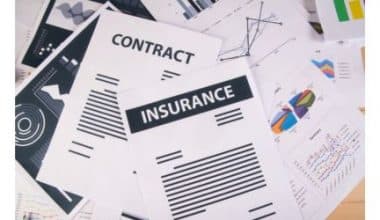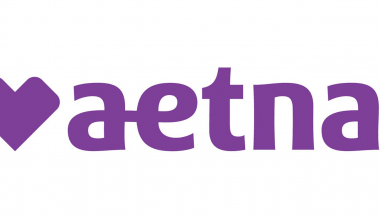If you have insurance with AAA and you’ve been in a car accident, you may be wondering how the company’s claims filing works. To file a car accident claim with AAA, you can simply call their 24/7 claims call center. The claims representative will ask you to give them specific details, including the following:
- The location and time of the collision
- Names of the drivers involved in the crash
- Vehicles involved in the accident
- Names and contact information for any witnesses
- Descriptions of any damage resulting from the accident
AAA will also want to see the police report if you have one.
Overview of AAA
AAA, or the American Automobile Association, is a company of motor clubs throughout North America. This privately held not-for-profit national member association and service organization have over 60 million members in the United States and Canada. AAA provides various services to its members, including roadside assistance and insurance coverage.
AAA offers a variety of membership plans so that you can choose the one that is best for you. Members can choose between basic, plus, premier, or other membership offerings. Many plans include towing and lockout services in addition to all other AAA membership benefits.
Potential members can also use AAA’s online tools to get free insurance quotes and estimates.
AAA has extra benefits that can be helpful in case of an emergency. For example, AAA members can get discounts on hotel stays, rental cars and other travel expenses. They also have access to a 24-hour roadside assistance service. This can be a lifesaver if you have a flat tire or need help jump-starting your car.
AAA car insurance Regional Clubs
Because AAA is a federation of regional clubs, exact car insurance options vary based on location. To learn more about what’s available in your area, go to AAA’s website and enter your ZIP code. This will route you to the homepage of your regional AAA.
Here’s a look at the three main groups that offer AAA car insurance and the states where they are available.
Auto Club Enterprises
Regional clubs that fall under Auto Club Enterprises include:
- Automobile Club Interinsurance Exchange (Illinois)
- Automobile Club Interinsurance Exchange (Louisiana)
- Automobile Club Interinsurance Exchange (Missouri)
- Auto Club Country Mutual Insurance (Texas)
- Automobile Club of Southern California (this includes Interinsurance Exchange)
AAA car insurance from Auto Club Enterprises is available in the following states:
- Alabama
- Arkansas
- California
- Hawaii
- Illinois
- Indiana
- Kansas
- Kentucky
- Louisiana
- Maine
- Mississippi
- Missouri
- New Hampshire
- New Mexico
- Ohio
- Pennsylvania
- Texas
- Virginia
- Vermont
- West Virginia
CSAA Insurance Group
Regional clubs that fall under CSAA Insurance Group include:
- Automobile Club Inter-Insurance (Arizona)
- AAA Ohio
AAA car insurance from CSAA Insurance Group is available in the District of Columbia and the following states:
- Arizona
- California
- Colorado
- Connecticut
- Delaware
- Idaho
- Indiana
- Kansas
- Kentucky
- Maryland
- Montana
- New Jersey
- Nevada
- New York
- Ohio
- Oklahoma
- Oregon
- Pennsylvania
- South Dakota
- Utah
- Virginia
- West Virginia
- Wyoming
The Auto Club Group
Regional clubs that fall under The Auto Club Group includes:
- AAA Michigan Insurance
- Auto Club Group Insurance Co. (Nebraska)
- Auto Club Group Insurance Co. (Wisconsin)
- Auto Club Insurance Association (Illinois)
- Auto Club Property-Casualty (West Virginia)
- Meemic Insurance Co. (Michigan)
- MemberSelect Insurance Co. (Minnesota)
AAA car insurance from The Auto Club Group is available in the District of Columbia and the following states:
- Florida
- Georgia
- Iowa
- Illinois
- Michigan
- Minnesota
- North Carolina
- North Dakota
- Nebraska
- South Carolina
- Tennessee
- Wisconsin
AAA insurance coverages
Here’s a look at the core coverage types you can buy through AAA car insurance:
Liability car insurance
Liability car insurance covers accidental injuries and property damage to others if you cause a car accident. It also pays for your legal costs, judgments, and settlements if you are sued because of an accident. In most states, drivers are required to carry a minimum amount of liability insurance.
Personal Injury Protection (PIP)
Personal injury protection (PIP) is a required coverage in no-fault states. PIP pays for your medical bills if you get hurt in an accident, no matter who is at fault. It also extends coverage to passengers riding in your car who are also injured. If you live in a fault state, PIP is often available as an endorsement for extra protection.
Comprehensive insurance
Comprehensive insurance pays to repair or replace your car if it’s damaged due to problems like fires, floods, severe weather, vandalism, theft, falling objects and collisions with animals. The maximum payout for comprehensive insurance is the actual cash value of your vehicle if it is totaled, minus your deductible.
Collision insurance
Collision insurance pays to repair or replace your car after an accident, no matter who is at fault. It also covers accidents with stationary objects, like a guardrail or telephone pole. The maximum payout for collision insurance is the actual cash value of your vehicle if it’s totaled, minus your deductible.
Collision and comprehensive insurance are optional coverage types that are usually sold together. If you have a lease or loan, you’ll likely be required to have both.
Uninsured/Underinsured motorist insurance
While uninsured motorist coverage is required in some states, it is optional in other states. If a driver crashes into you and they don’t have insurance or don’t have enough insurance to cover your losses in full, uninsured/underinsured motorist coverage will provide additional coverage for you and your passengers’ injuries.
In some states, you can buy coverage for damage to your car caused by an uninsured driver.
Medical Payments insurance
Medical Payments insurance (MedPay) pays for your medical bills if you, a family member or a passenger in your car gets injured in an accident. It covers expenses such as ambulance rides, X-rays, surgery, prescription medication and rehabilitation.
Other insurance coverage options that AAA offers include:
- Gap insurance. This pays the difference between your car’s value and the balance of your loan or lease if the car is totaled or stolen.
- OEM exterior repair coverage. Pays for original equipment manufacturer parts instead of aftermarket parts for covered external body repairs.
- New car replacement. Pays for the value of a new vehicle if your car is declared a total loss. Your car will be replaced with a vehicle of the same make and model. This coverage is typically available only if you own a newer car.
- Better car replacement. This pays for a car one to two years newer than your vehicle if it’s totaled in a crash. You may be able to purchase this coverage if your car is too old to qualify for a new car replacement.
- Rideshare insurance. Ensures you’re always covered during your rideshare job. Typical insurance from ridesharing companies only covers the period between accepting a ride and dropping off a customer.
AAA Auto insurance discounts
Most customers with AAA auto insurance receive a discount for being a AAA member. You may also be able to save by:
- Being an alum of certain schools.
- Having certain factory-installed safety equipment.
- Owning a car with approved theft prevention devices (discount on comprehensive coverage).
- Having continuous auto insurance coverage from AAA.
- Meeting AAA’s standards for a safe driver.
- Earning good grades if you’re a student.
- Having a student on your policy who keeps their car at home while they’re away at school.
- Completing a driver training course.
- Insuring more than one vehicle with AAA.
- Buying multiple insurance products from AAA.
- Paying your premium in full.
- Paying electronically and setting up automatic payments.
- Being in the military.
- Being a AAA employee or member.
- Owning a new car.
- Owning an environment-friendly car.
- Owning a home.
Like most insurers, AAA’s insurance companies offer many discounts, but they differ by state and company, so check with your local AAA club to see which are available to you.
How do I file a claim with AAA Insurance?
Like many other insurance companies, the first step to receiving compensation for your injuries is to file a claim with AAA itself. According to AAA itself, the filing process has a few different steps and utilizes technology-based platforms.
To seek compensation from your or another driver’s AAA insurance policy, you must:
- Prepare your claim. You will need proof of your damages, including medical bills for your injuries and vehicle repair or replacement estimates. These documents will determine the amount of compensation you could receive.
- Contact the insurance provider. After the accident, you’ll need to inform the insurance company about the collision and your intent to file a claim. You can also inquire about the required paperwork and any applicable deadlines.
- Complete your claim forms. Include all the documents supporting your claim as requested by your insurers, such as a police report or a death certificate if it’s a life insurance claim.
- Supply the information your insurance provider requests. Gather all the information related to your claim, like medical reports, eyewitness statements, and copies of all bills related to the accident, and provide them to the insurer upon request.
All this can seem overwhelming if you’re still recovering from your injuries. Know that you don’t have to handle the claims process alone—you can hire a car accident attorney to handle these tasks on your behalf.
Reaching a settlement
While proceeding to trial may be the ideal avenue for redress in some cases, many car accident victims choose to settle with their insurance companies outside of court. If you are interested in settling your AAA car accident claim, an attorney may be able to help you.
This is because experienced car accident settlement lawyers know how to do the following things:
- Determine Fault. Determining fault is a critical step for those who wish to seek redress for their injuries and damages. Different states use various statutes with specific rules for determining who is responsible for an automobile collision. Some states have “at-fault” statutes, while others utilize “no-fault” ones.
- Assess Your Damages and Options. Although there are some generic factors to consider when determining your damages, the calculation itself may still prove to be difficult for individuals unfamiliar with the insurance system. A car accident attorney may be able to help you seek many different types of damages from AAA, including uncommon ones.
- Navigate the Filing Process. As previously explained, AAA has a specific process for filing an insurance claim with their company. Even if you are not a customer of AAA, you may be forced to deal with their extensive filing procedures if you were involved in an accident with another driver covered by AAA. An experienced personal injury attorney may be able to help you speed up this process by completing and submitting your paperwork on time.
- Potentially Negotiate a Fair Settlement. When dealing with AAA and other large insurance companies, experience and knowledge are extremely important, especially when attempting to negotiate a fair settlement. An experienced lawyer may also be able to assist you in this regard.
How long does it take to settle AAA insurance claims?
Unfortunately, there is no set time limit for settling AAA insurance claims. The amount of time it takes to settle your claim will depend on many factors, including the complexity of your case, the extent of your injuries and property damage, and the insurance company’s willingness to negotiate fairly.
This process may take anywhere from a few months to a few years.
What could delay an insurance settlement?
Although each insurance claim is a unique situation, these typical factors could delay the process:
- Low settlement offers. You might reject AAA’s initial settlement if it’s too low and doesn’t accurately address your damages. Back-and-forth negotiations might delay the settlement even further.
- Errors and miscommunications. If you provide false or inaccurate information when filing your claim, it can add complications and slow down the claims process.
- Claim validity. If there are questions regarding your claim’s validity, it can drag out negotiations or even lead to claim denial. For example, the insurer may suggest your injuries aren’t as serious as you claim or that the accident didn’t cause them.
An attorney can prepare you for these and other potential obstacles to keep your AAA claim moving forward.
How can you speed up an AAA insurance settlement?
Insurance claims involving AAA take a while to be settled, but there are a few steps you can take to speed up the process, including:
- Be prompt in filing your claim. After an accident, you should file your claim as soon as you can and provide all the necessary documentation for the insurer to begin processing.
- Avoid speculating about the collision. It’s important to let the insurer perform its own investigation into what happened. Speculating could cause confusion in your claim.
- Understand the extent of your damages. The more information you have about your damages, the easier it will be to recognize when a settlement offer is fair or undervalues your claim. It will also ensure your initial compensation demand is as accurate as possible.
Again, hiring an attorney can also help you keep your insurance claim on the right track while also protecting your rights and advocating for your financial recovery. Your lawyer will handle communications with the insurer to ensure you provide enough information without jeopardizing your claim.
Recommended Articles
- How Long Does Insurance Claim Take To Settle?
- AT&T Insurance Claim: How to File an Insurance Claim With AT&T
- HOW TO SCARE AN INSURANCE ADJUSTER: Complete Guide to Insurance Claims
- WHAT IS A CLAIM IN INSURANCE? How It Works
- Broad-Form Insurance: Definition, Coverage & Cost
- Contents Insurance: What Is It & What Does It Cover?






